The Art of Conducting Usability Testing: Best Practices
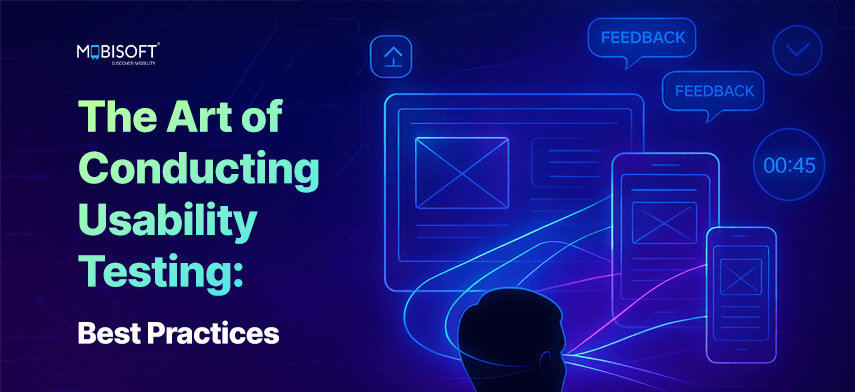
Think about it. . . How many times have you had a frustrating experience with a website? Confusing layouts. Unreadable buttons. Forms that make you question your existence. That’s not user error. That design has gone rogue.
And the biggest culprit? A lack of usability testing.
In this guide, we’re going deep into the what, why, and how of UX testing. Not in a boring, robotic way. But in a way that makes you actually want to test your product before users rage-quit.
Whether you’re a startup founder, a CIO, or a business owner who just wants customers to use the damn thing, this one’s for you. If you’re looking for professional support, you can hire a usability tester to ensure your product gets real-world validation before launch.
Is Your Product Usable in the Long-Term?
User experience testing answers exactly this question Your website’s usability testing process involves an actual user trying to navigate through it. Like standing behind a one-way mirror while someone tries to use your product.
You’re watching where they struggle and where they are comfortable. It highlights which parts of the interface or flow are making the overall experience uncomfortable. This real-time feedback is crucial for analysis and improvement.
Think of it as quality control for the human experience, the foundation of user-centered design. Learn how usability fits into the bigger picture with our guide on usability testing in the UX design process.
Usability Testing vs. Traditional Testing: A Comparative Overview
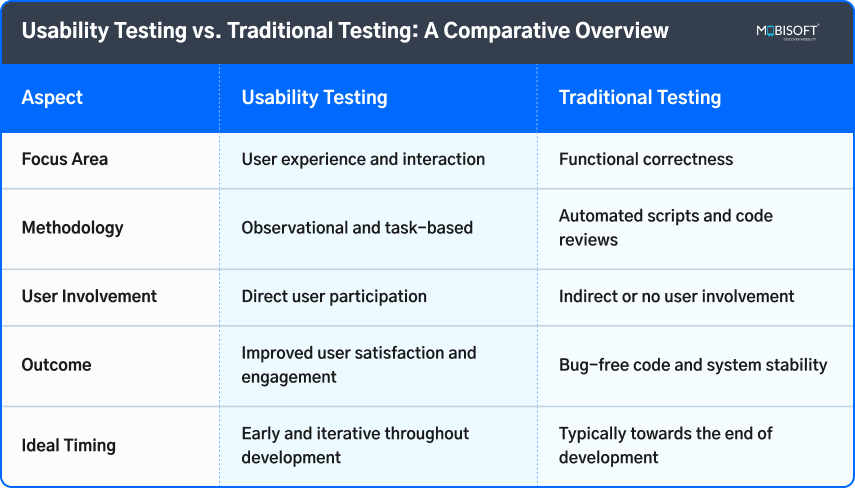
Want to strengthen your design team? You can hire expert UI/UX designers to create user-friendly digital products.
Why Are Usability Testing Services Important?
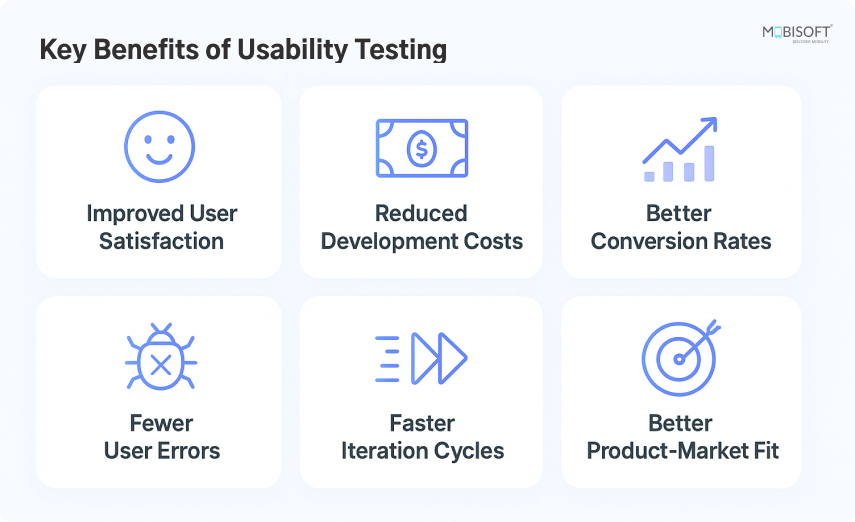
Yes, because you’re not designing for yourself. It’s for the users. So you need to think like one. They skip instructions. They ignore the flashing red buttons. They press “back” the moment they get confused.
Recent studies show that 80% of users will delete an app if it has two technical issues. Usability testing services help you catch these issues before your product hits the market. Or worse, gets roasted on social media.
It’s cheaper than rebuilding. It’s faster than guessing. And it’s way more effective than staring at your screen hoping your design “just works.”
Source: Why Testing is Critical for UX in 2025
When Should You Conduct Usability Testing?
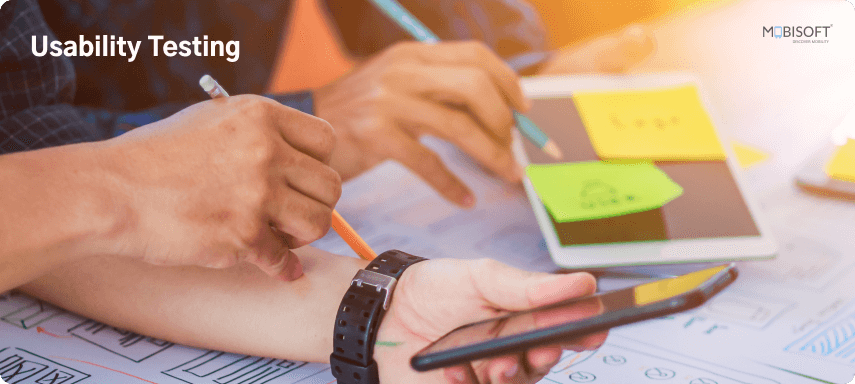
Short answer: early and often.
Long answer: run usability tests at every major milestone. Before you start building. Midway through development. After launch. And every time you roll out something new.
Usability testing is the last crucial check you need to make before making your product live. Sure, the product might be great. But there are always minor touchpoints, which will eventually become a problem for the users.
A good design foundation matters. Check out our web UI/UX design services to ensure your digital products are intuitive from the start.

The Different Flavors of Usability Testing Methods
There’s no one “right” way to do usability testing. Here are the most common usability testing examples:
- Moderated Testing
A member of the team supervises while the user engages with the app. You can note observations, ask for feedback, conduct a Q&A, etc. The objective is to find out prevailing issues, although the methods are varied.
Example: Watching a user try to edit their profile while they mutter, “Wait, where is the settings icon?”
- Unmoderated Testing
The user tests on their own time. You send them a link, they record the session, and you get back unfiltered reactions. No pressure. No judgment. Just the truth.
- Remote Testing
Perfect for distributed teams or users in different cities. Tools like Maze, Lookback, and Useberry let you record sessions without ever booking a meeting room.
- In-Person Testing
Old-school but still effective. Great for physical products or when you want to see every micro-expression as users wrestle with your design.
For more insights, don’t miss our blog on common mobile UX mistakes and how to avoid them during testing.
Running the Usability Testing Process: Step by Step
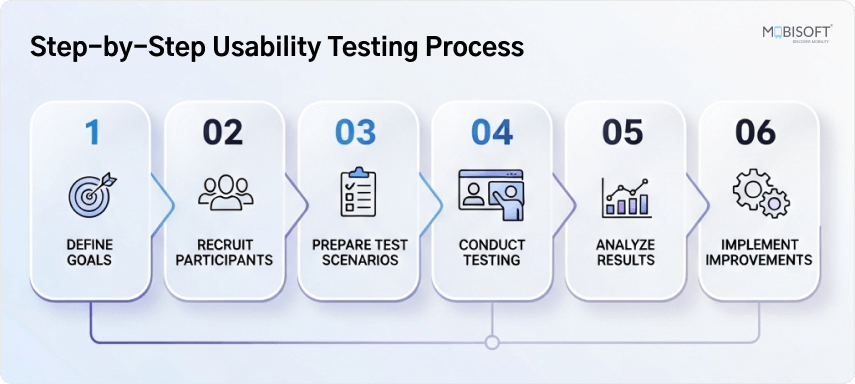
Now let’s walk through the whole process, from setting goals to acting on results. Follow these practical steps that work.
Step 1: Set Your Goals
What exactly are you trying to learn? Be specific.
Don’t just say “I want to test the homepage.” Say something like:
- Can users find the main CTA in under 10 seconds?
- Do users understand the pricing structure?
- Where do users drop off during sign-up?
Clear goals lead to focused UX testing. Focused tests lead to useful insights. It’s that simple.
Step 2: Recruit the Right Users
Don’t let your colleagues or co-workers be the testers. Bias can skew your results. Select people across different age groups (but from your target audience), with a mix of skill levels. Your group should represent a small version of your target audience.
You want real users. People who might actually use your product. Ideally, a mix of skill levels. First-timers. Regular users. The curious. The impatient.
And no, you don’t need a huge sample size. Research shows that 5 to 7 users can uncover most major usability issues.
Quality > Quantity. Always.
Step 3: Choose Realistic Tasks
Now’s not the time for fantasy scenarios. You want real, common, everyday tasks that your users would naturally try to complete.
For example:
- “Find and apply a discount code.”
- “Schedule an appointment with a therapist.”
- “Add a second user to your account.”
Never provide a blueprint to follow; let the test users navigate freely. This helps with realistic feedback. Make sure the tasks are complete with a defined objective. This step also helps in customer experience testing.
Step 4: Create a Script (And Stick to It)
Don’t spend too much time writing the perfect script. All it needs to be is clear and concise.
Structure it like this:
- Start with a warm-up: basic questions like “Have you used similar products before?”
- Explain the rules: “There are no right or wrong answers.”
- Introduce tasks one at a time.
- End with follow-up questions: “What confused you most?” “What felt easy?”
Remember to finalise a script and use it for every single participant. Varying instructions will lead to varied results.
Read More: https://mobisoftinfotech.com/resources/blog/ui-ux-design/usability-testing-best-practices
- AI
- Vitamins
- Health
- Admin/office jobs
- News
- Art
- Causes
- Crafts
- Dance
- Drinks
- Film
- Fitness
- Food
- Juegos
- Gardening
- Health
- Home
- Literature
- Music
- Networking
- Other
- Party
- Religion
- Shopping
- Sports
- Theater
- Wellness


